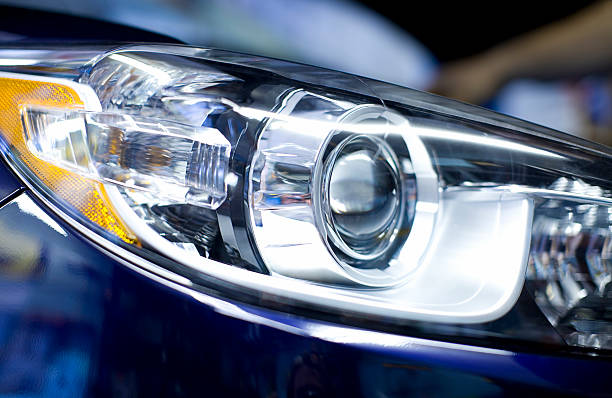Selecting an optimal lighting system can be a complex task, as it requires careful consideration of various factors based on specific constraints. As a consumer, it is important to take into account the Colour Rendering Index (CRI) when choosing exterior LED lights for your automobile. This will guarantee that the lighting system delivers precise and dependable colour representation, which is essential for a safe and satisfactory driving experience.

The evolution from traditional halogen bulbs to more advanced lighting solutions like HID, LED, and hybrid systems represents a significant technological leap in automotive lighting. Each type of light offers distinct advantages and disadvantages, impacting aspects such as performance, energy consumption, and cost. This blog post delves into the differences among halogen, HID, LED, and hybrid driving lights, providing a comprehensive overview to inform both automotive enthusiasts and industry professionals.
Halogen Driving Lights
Halogen lights have been the standard in automotive lighting for decades, primarily because of their simplicity and cost-effectiveness. These lights operate by passing an electric current through a tungsten filament, which is enclosed in a glass filled with halogen gas. The interaction between the tungsten and the halogen gas produces a bright, white light.
Advantages:
- Cost: Halogen bulbs are the most affordable option in the market.
- Universal Fit: They are compatible with nearly all vehicle models.
- Colour Temperature: Provides a warm light that is comfortable for night driving.
Disadvantages:
- Energy Efficiency: Less efficient than HID and LED, converting more energy into heat rather than light.
- Lifespan: Halogen bulbs have a shorter lifespan, typically around 500 to 1,000 hours.

HID (High-Intensity Discharge) Driving Lights
HID lights, also known as xenon lights, use a different technology that involves passing electricity through a gas-filled capsule. Xenon gas, along with other noble gases, facilitates a bright, intense light output that is brighter than that of halogens.
Advantages:
- Brightness: HIDs are significantly brighter than halogens, improving visibility significantly.
- Efficiency: More efficient than halogens, they convert more power into visible light which human eyes can observe.
- Lifespan: Longer lifespan than halogen bulbs, typically around 2,000 to 3,000 hours.
Disadvantages:
- Cost: More expensive than halogen bulbs.
- Installation: May require modifications for retrofitting in vehicles designed for halogen bulbs.
- Glare: Can cause more glare to other drivers if not properly aligned.

LED (Light Emitting Diode) Driving Lights
LED lights represent the latest in lighting technology. These lights use semiconductors to convert electricity directly into light without the need for a filament or gas.
Advantages:
- Energy Saving: LEDs are highly efficient, with minimal energy wasted as heat.
- Durability: Resistant to shocks and vibrations, making them ideal for rough driving conditions.
- Lifespan: Extremely long-lasting, with lifespans up to 25,000 hours or more.
Disadvantages:
- Cost: Initially, LEDs are more expensive than halogen and HID bulbs.
- Temperature Sensitivity: Performance can be affected in extremely cold conditions.

Hybrid Driving Lights
Hybrid driving lights combine technologies, often integrating LED and HID elements to maximize performance. This approach allows for a customizable lighting solution that harnesses the strengths of each technology.
Advantages:
- Versatility: Combines the instant brightness of LEDs with the intensity and range of HIDs.
- Performance: Offers a balance of efficiency, brightness, and longevity.
Disadvantages:
- Cost: Typically the most expensive option because of the complexity of the technology.
- Complexity: This may require more sophisticated control systems and maintenance.
Conclusion
Avoid waiting until your sight is hindered on a dimly lit, twisting path. Explore your options today and upgrade your vehicle's lighting system. Whether you choose HID for its brightness, LED for its efficiency, or a hybrid for the best of both, enhancing your driving lights is a proactive step towards safer and more enjoyable driving experiences.
Consult with automotive lighting experts or visit your local car service provider to find the best lighting solution tailored to your driving needs. Illuminate your path forward with the right choice—because on the road, visibility is paramount.




